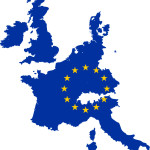The European Commission’s revised Renewable Energy Directive proposal
Sometimes, legislative proposals serve as poor policy because they fail to consider the practical realities of the industries affected and they may be discriminatory and inconsistent with international legal obligations. In the case of the EU’s renewable energy framework, it appears that both ‘boxes are ticked’.
Currently, the EU’s renewable energy framework is found in Directive 2009/28/EC of the European Parliament and of the Council of 23 April 2009 on the promotion of the use of energy from renewable sources and amending and subsequently repealing Directives 2001/77/EC and 2003/30/EC (i.e., Renewable Energy Directive, or RED). The RED serves as a legislative approach for the EU to ensure that it meets its 2020 targets for reducing energy consumption. In order to expand its renewable energy framework, so as to attempt addressing its 2030 energy consumption targets, the European Commission (hereinafter, Commission), on 30 November 2016, published a proposal for a revised RED (which it later corrected on 23 February 2017). Although the EU should be praised for its commitment to improving the sustainability of its energy industry, arguably its approach is both practically and legally flawed.
The EU’s current RED
Broadly speaking, the original RED set an EU-level renewable energy consumption target for 2020 that relied heavily on EU Member States’ national targets for implementation. The revised RED instead chooses to set an EU-level binding target for 2030 that is not translated into national targets. The current RED calls for the EU to fulfil 20% of its energy needs via renewable sources by 2020 and, with respect to transport fuels specifically, it requires that at least 10% of transport fuel consumption be derived from renewable sources. Conversely, the revised RED requires that 27% of energy consumption in the EU be derived from renewable sources by 2030, and removes the requirement that 10% of transport fuel consumption be derived from such sources. The current RED also states that the contribution from biofuels and bio-liquids, as well as from biomass fuels consumed in the transport sector, if produced from food or feed crops, shall be no more than 7% of the final energy consumption in road and rail transport.
Main relevant aspects of the Commission’s revised RED proposal
With regards to the changes made under the revised RED, Articles 7 and 25 of the revised RED proposal are most relevant to biofuels. Article 7 regulates how to calculate the share of energy from renewable sources, and includes a decreasing maximum share of biofuels and bio-liquids produced from food or feed crops, starting from 2021, as a way of addressing emission from Indirect Land Use Change (hereinafter, ILUC). Accordingly, EU Member States are permitted to set lower limits and may distinguish between different types of biofuels and bio-liquids produced from food and feed crops. An example provided in the Commission’s revised RED proposal is that an EU Member State could set a lower limit for the contribution from biofuels produced from oil crops (e.g., palm oil) by taking into account ILUC data.
Article 25 of the revised RED proposal establishes an EU-level obligation for fuel suppliers to provide 6.8% of low-emission and renewable fuels by 2030 (including renewable electricity and advanced biofuels). This is intended, in part, to stimulate decarbonisation and energy diversification. The Commission’s proposal notes that ILUC issues are addressed through Article 7, which (it recognises) introduces a decreasing maximum share of biofuels and bioliquids produced from food or feed crops starting from 2021. The switch to advanced biofuels is promoted by a specific sub-mandate, increasing their contribution yearly to reach at least 3.6% by 2030. Article 25 also includes increased burdens on the industry by introducing a provision on the introduction of national databases for the traceability of fuels.
It is also worth mentioning that Article 26 of the Commission’s revised RED proposal increases the greenhouse gas (hereinafter, GHG) saving performance requirement of the current RED to 70% for biofuels. This is important because, for a biofuel to be used in the calculation of the final energy consumption, it must qualify as ‘sustainable’ under the EU’s criteria. Until 2017, this meant, in part, that biofuels must have achieved GHG emissions savings of at least 35%, but as of 2017 this requirement was raised to 50%. A 70% GHG emissions savings would exclude even more biofuels from consideration by businesses, and do so in a rather arbitrary manner. That is to say, the thresholds of 35%, 50% and 70% do not appear to be based on science, but instead set to meet voluntary targets in a manner that benefits (de facto, if not de jure) some biofuels over others.
In general, the changes to the EU’s current RED appear to be intended to meet one of objectives of the revised RED proposal, which is to develop “the decarbonisation potential of advanced biofuels and clarify the role of food-based biofuels post 2020”. These changes are also largely based on an impact assessment accompanying the Commission’s proposal. Specifically, with regard to biofuel consumption, the impact assessment considered four options to increase low-carbon and renewable energy in the transport sector: (1) an obligation for the incorporation of advanced renewable fuels at the EU level; (2) an obligation for the incorporation of advanced renewable transport fuels (including advanced biofuels) at the EU level, alongside a reduction of food-based biofuels with a range of variants covering the speed and extent of reduction; (3) building on option 2, a dedicated obligation for aviation and maritime renewable fuels at the EU level; and (4) a GHG emission reduction obligation (i.e., continuation of the EU’s Fuel Quality Directive).
The Commission’s revised RED proposal states that the second option is preferred because it builds upon the practice of 25 EU Member States that have introduced biofuel blending mandates, and because it provides the biofuel industry with greater certainty about future demands and volumes for advanced biofuels. The proposal also states that the second option will allow for a gradual reduction of food-based biofuels in line with the Commission’s Strategy for Low-Emission Mobility, released back in July 2016. The proposal specifically points to the primary focus of reducing oil-crop based biofuels, which it states are associated with higher ILUC impacts. According to the July 2016 Strategy for Low-Emission Mobility, food-based biofuels have a limited role in decarbonising the transport sector. The proposal goes so far as to state that, “[a] progressive reduction of food based biofuels and their replacement by more advanced biofuels will realise the potential for decarbonising the transport sector”.
Countering the Commission’s approach
There are, however, legitimate concerns about the Commission’s approach, both from legal and practical perspectives.
In the context of the relevant international legal obligations, in particular under the World Trade Organisation, the EU and its individual Member States are bound to the General Agreement on Tariffs and Trade 1994 (hereinafter, GATT) and the Agreement on Technical Barriers to Trade (hereinafter, TBT Agreement). In this regard, Article III:4 of the GATT and Article 2.1 of the TBT Agreement, respectfully, require non-discriminatory treatment between ‘like’ products. Such ‘like’ products could include biofuels derived from a variety of sources, such as palm oil, coconut oil, rapeseed oil and sunflower oil. ‘Like’ products may even include first-generation and second-generation biofuels (e.g., biofuel derived from coconut oil versus biofuel derived from biomass). Traditionally, the approach used to determine ‘likeness’ includes the consideration of: (i) the properties, nature and quality of the products; (ii) the end-uses of the products; (iii) consumers’ perceptions and behaviour in respect of the products; and (iv) the tariff classification of the products. Insomuch as Article 2.1 of the TBT Agreement is concerned, in US – Clove Cigarettes, the WTO Appellate Body found that the determination of ‘likeness’ using the traditional factors listed above is also a determination of the competitive relationship between the products. When applied to biofuels, it is questionable whether the emissions produced during the lifecycle and beyond are an issue that should be considered at all when assessing ‘likeness’, to the extent that they do not appear to have an impact on any of the factors listed above. If this is true, then the varying levels of access afforded to different types of first-generation biofuels could be de facto discriminatory, and the express distinction between first-generation and second-generation biofuels could be de jure discriminatory.
Article 2.2 of the TBT Agreement goes on to prohibit measures that appear to be more trade-restrictive than necessary to fulfil a legitimate objective. Such legitimate objectives include “plant life or health, or the environment”. However, Article 2.2 of the TBT Agreement states that, in assessing such risks, relevant elements of consideration include available scientific technical information, related processing technology, or intended end-uses of products. This is especially relevant given the reports indicating that, last year, the former Director of Renewables, Research, and Energy Efficiency of the Commission, Ms. Marie Donnelly, made statements that arguably show the underlying de facto discriminatory nature of the EU’s renewable energy framework. In particular, Ms. Donnelly noted that, “[w]e have to be very sensitive to the reality of citizens’ concerns, sometimes even if these concerns are emotive rather than factually based or scientific”. If the EU is indeed basing its legislative text in this area of regulation on emotive concerns, rather than on science-based concerns, such evidence could be used against the EU should a dispute be initiated at the WTO.
Aside from the potential legal-inconsistencies that may be present in the EU’s current and proposed revised RED, the practical issues with, in particular, the Commission’s revised RED proposal were recently highlighted by Mr. Olivier Dubois, a senior natural resources officer with the United Nations’ Food and Agriculture Organisation (FAO). Speaking at an EURACTIV-sponsored event on 7 June 2017, titled “Biofuels and Sustainability: Decarbonising transport and fuelling food security”, Mr. Dubois addressed the debate surrounding the use of food-based biofuels. Reportedly, Mr. Dubois took the opportunity to counter the “oversimplified and sweeping statements” that do not reflect reality, including the idea that crop-based biofuels are necessarily bad for food. Instead, Mr. Dubois stated that food-based biofuels should be viewed as a tool for responsible investment in agriculture and rural development. Mr. Dubois used as examples the sugar and palm oil industries to illustrate his point. He recognised that the first sector, sugar, was not known to cause fundamental problems in terms of food security or create large land use changes, and that, Brazil had significantly invested in the sugar industry to the point that it was now able to produce enough for food consumption as well as energy consumption (i.e., ethanol fuel). With respect to the palm oil sector, Mr. Dubois recognised that palm oil accounts for two-thirds of global vegetable oil production, and is produced with a yield three to four times higher than other (competing) vegetable oils. This is important also because palm oil allows for greater production by small-scale farmers, which account for 45% of its production. The comments by Mr. Dubois come amidst increasing calls for the use of second-generation (or “advanced”) biofuels, which are derived from biomass (i.e., non-food parts of crops, as well as crops not used for food purposes). Mr. Dubois opined that the Commission’s proposal pertaining to second generation biofuels was “a bit restrictive”. Notably, he stated that, in order to reach the EU’s climate change objectives, first generation biofuels (e.g., vegetable oils) should be part of the framework.
Concluding remarks
Even after significant public and private debate, including the launching of a public consultation and the completion of an impact assessment, the Commission continues to pursue a renewable energy framework that does not appear to appropriately meet the EU’s objectives of lowering energy consumption. Indeed, there is no scientific consensus on the methodologies and criteria used by the Commission to calculate indirect land use change and GHG emissions reductions and there is, disturbingly, circumstantial evidence that the EU’s policy choices are being dictated by emotive concerns rather than science-based decisions. First-generation biofuels, in particular palm-oil based biofuel, must remain appropriate and practical sources of renewable energy in the EU transportation sector, especially in light of the continuing improvement to palm oil’s sustainability and manufacturing processes. European officials and legislators would be wise to reconsider attempts to focus fuel incentives to second-generation biofuels, both in order to meet the EU’s own climate change objectives, as well as to remain free from lengthy dispute settlement proceedings should adversely-affected countries decide to pursue remedies on the international stage.
Fratini Vergano









Leave a Reply